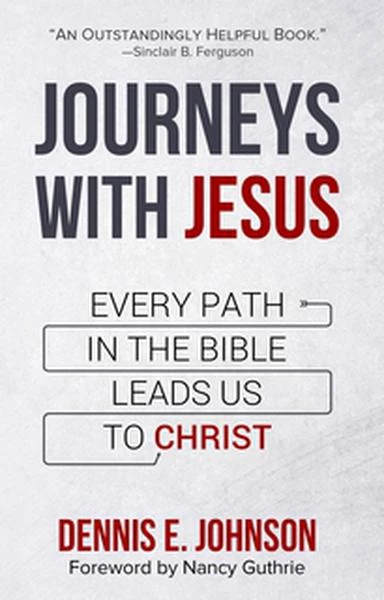
Dennis E. Johnson
Reviewed by: Robert R. Drake
Journeys with Jesus: Every Path in the Bible Leads Us to Christ, by Dennis E. Johnson. P&R, 2018. Paperback, 192 pages, $11.50. Reviewed by PCA minister Robert R. Drake.
The title of the book comes from the literal walk Jesus took with two men on the road to Emmaus on Easter Sunday and from the figurative walk the men took as Jesus led them through the Scriptures to see the Old Testament anticipations of the Christ’s sufferings and glory. Dr. Johnson doesn’t try to tell us everything Jesus might have said either to those in Emmaus or to the disciples that same night. Instead, he equips us to take the walk ourselves. He provides an overview of redemptive history and the interpretative tools to see Christ.
At first, because the book is brief, clear, and written with summaries and discussion topics at the end of each chapter, pastors may think it is appropriate only for an adult Sunday school class or Bible study group. However, from an opening illustration attributed to Spurgeon, we know that Johnson also has pastors in mind.
The story goes that a young expository preacher was told by an older pastor that the young man’s sermon had been poor because Christ wasn’t mentioned. The young preacher objected that Christ wasn’t in the text. The older man said that every road in a small English town can lead a traveler to the great city of London. The point, of course, was that every passage of Scripture is like a road that can lead us to Christ. After all, preaching is to “preach Christ.” If any pastor has noticed upon reflection that Christ has not really been in his sermons, he will want to investigate this book.
I said the book was clear, but I had some trouble with the basic metaphors used to explain redemptive history. The general road imagery shifts to a river representing the covenant of grace, which flows toward a lake that is Christ. Along the way are tributaries, which are the various covenants of redemptive history. The road imagery is picked up again when Old Testament “types” are called “road signs.” However, one diagram has the road signs alongside the tributaries. To this a third metaphor is used, that of “landmarks,” such as mountains, which refer to the offices of prophet, priest, and king. They appear in the same diagram, but I can’t get the pictorial unity, even though I’m usually a very visual person. Nevertheless, since Johnson has in mind a global audience for this book, the imagery is sure to be transcultural.
While it is fascinating to follow the story of covenants within covenants and types within covenants as redemptive history advances toward its fulfillment in Christ, God’s use of covenants and types raises a question. Why did the history have to take so long that it was necessary to keep the attention on Christ alive through types down through the ages? A comment about a reason for the length of time would have been welcomed, even if it’s only to say that the kingdom wasn’t big enough then or even now.
November 17, 2024
November 10, 2024
Taming the Fingers: Heavenly Wisdom for Social Media
November 03, 2024
Unfolding Redemption: Exploring the History and Order of Salvation
October 27, 2024
You Are Still a Mother: Hope for Women Grieving a Stillbirth or Miscarriage
October 06, 2024
September 29, 2024
September 22, 2024
Christianity and New Religious Movements: An Introduction to the World’s Newest Faiths
© 2024 The Orthodox Presbyterian Church